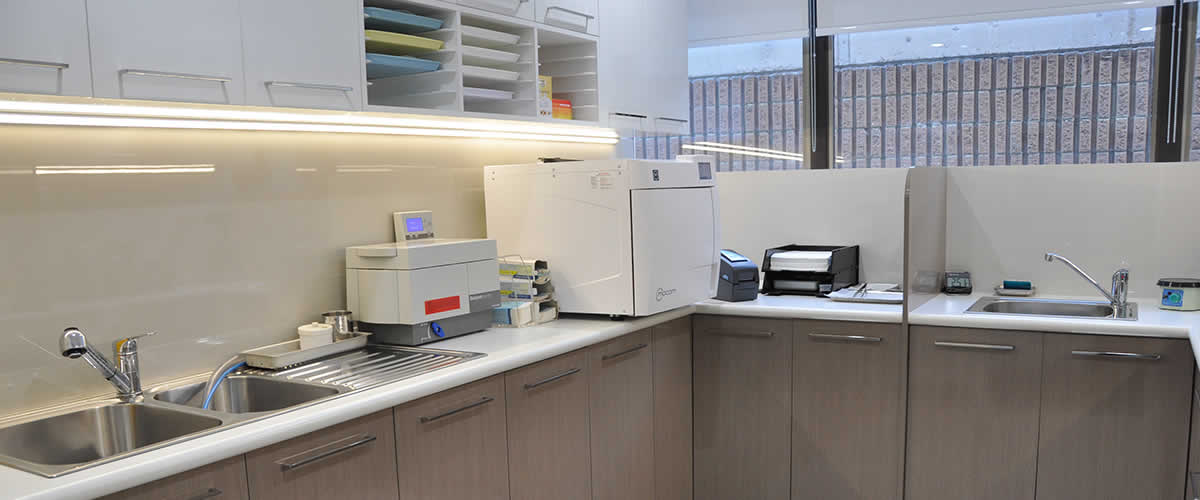
Can’t it wait?
If you think you have a dental problem don’t wait until it’s too late. As with most things all Dental problems get worse, some rapidly so, the longer you leave them, and the necessary treatment can progress past the point that they can be simply treated.Should I have my silver fillings replaced?
For a long time silver coloured amalgam fillings best option for filling teeth. This is no longer the case and we can now do tooth coloured fillings that bond effectively to teeth, better than amalgam ever could.
Amalgam fillings contained a high proportion of mercury and just like the mercury in a thermometer they expand and contract with hot and cold food. Over time this leads to cracking of the surrounding teeth – a major problem today. We usually recommend replacement if amalgam fillings show signs of deterioration such as decay or corrosion, if they make up most of a tooth, if the metal in them is discolouring the surrounding tooth or if their colour is unsightly.Should I use an electric or manual toothbrush?
Rather than the type of toothbrush it’s more important to have a thorough technique. Modern electric toothbrushes can be very efficient tooth cleaners but a normal toothbrush can be equally effective if used correctly. Electric toothbrushes can however be invaluable if the patients have a dexterity problem such as due to arthritis.What causes bad breath?
Bad breath (halitosis) can be a result of improper dental hygiene habits, dental disease or a symptom of more serious health issues.
Up to 80% of breath problems originate in the mouth. The odour is commonly worse in the morning because the flow of saliva is reduced during the night. In most cases dental treatment including professional cleaning, repairing problem teeth and treating gum disease will greatly improve breath problems. Tongue cleaning, including the use of a tongue scraper, can also make a difference.What should I do if I have a sensitive tooth?
Sensitivity is a sign that the nerve filled inner layers of the tooth have become exposed and the reason for that should be diagnosed by a Dentist. It could be a sign of a major problem developing.What should I do if I have knocked out my tooth?
If very dirty rinse it in milk or even have the patient suck it clean and place it back into the socket as soon as possible, and go to a Dentist. Don’t handle the root more than absolutely necessary as it could damage the cells necessary for healing. If that’s impossible wrap it in glad wrap, or place it in milk, or even in the patients mouth beside their cheek, and get to a Dentist as soon as possible, preferably within 30 minutes.What is an implant?
Dental implants are an innovative treatment for missing teeth. They use small biocompatible titanium screws, that when surgically inserted into the site of tooth loss, fuse with the jawbone and create a strong foundation for new teeth.
Dr Mumford attended his first Australian Congress of Implantology in 1986.Why do my gums bleed?
Bleeding gums, usually most noticeable after a particularly thorough cleaning of your teeth, is usually a sign of gum disease, the most common cause of tooth loss in Australia, and needs to be taken very seriously. Gum disease has also been linked with causing other diseases such as heart disease and strokes.
Gum disease begins with bacterial plaque, which is always forming on your teeth, without you even knowing it. If the plaque is not thoroughly removed on a daily basis it will form calculus (also called tartar) which is the breeding ground for the germs which cause gum disease.
Anyone at any age is susceptible to gum disease. You can lose your teeth from gum disease because this disease attacks the gums as well as the bone which are the foundation in which your teeth rest. Your teeth become loose, infected and can even fall out as the bone literally dissolves away from around your teeth.
Gum diseases are classified according to the severity of the disease. The two major stages are gingivitis and periodontitis. Gingivitis is a milder and reversible form of gum disease that only affects the gums. Gingivitis may lead to more serious destructive forms of gum disease called periodontitis.WHAT ARE THE SIGNS OF GUM DISEASE?
Gum disease may progress painlessly, producing few obvious signs, even in the late stages of the disease. Although the symptoms of gum disease often are subtle, the condition is not entirely without warning signs. Certain symptoms may point to some form of the disease. Visit our participating dentists if you notice any of the following signs of gum disease:
- Gums that bleed when you brush your teeth
- Red, swollen or tender gums
- Gums that have pulled away from the teeth
- Bad breath that doesn’t go away
- Pus between your teeth and gums
- Loose teeth
- A change in the way your teeth fit together when you bite
- A change in the fit of partial dentures
WHAT ARE THE CAUSES OF GUM DISEASE?
The main cause of gum disease is bacterial plaque- a sticky, colorless film that constantly forms on your teeth. However, factors like the following also affect the health of your gums.
- Tobacco smoking or tobacco chewing
- Systemic diseases such as diabetes
- Some types of medications
- Bridges and dentures that no longer fit properly
- Crooked teeth
- Fillings that have become defective
- Pregnancy or use of oral contraceptives
- Clenching or grinding your teeth
- Poor nutrition
Gum disease will not go away by itself or with even just with improved home care. The only way of removing plaque deep under the gums is with professional cleanings. Once you have had a gum problem you will always be susceptible to recurring problems, so be sure to see your dentist on a regular basis – every six months or even more often if the condition is severe.
–
If you think you have a dental problem don’t wait until it’s too late. As with most things all Dental problems get worse, some rapidly so, the longer you leave them, and the necessary treatment can progress past the point that they can be simply treated.
–
For a long time silver coloured amalgam fillings best option for filling teeth. This is no longer the case and we can now do tooth coloured fillings that bond effectively to teeth, better than amalgam ever could.
Amalgam fillings contained a high proportion of mercury and just like the mercury in a thermometer they expand and contract with hot and cold food. Over time this leads to cracking of the surrounding teeth – a major problem today. We usually recommend replacement if amalgam fillings show signs of deterioration such as decay or corrosion, if they make up most of a tooth, if the metal in them is discolouring the surrounding tooth or if their colour is unsightly.
–
Rather than the type of toothbrush it’s more important to have a thorough technique. Modern electric toothbrushes can be very efficient tooth cleaners but a normal toothbrush can be equally effective if used correctly. Electric toothbrushes can however be invaluable if the patients have a dexterity problem such as due to arthritis.
